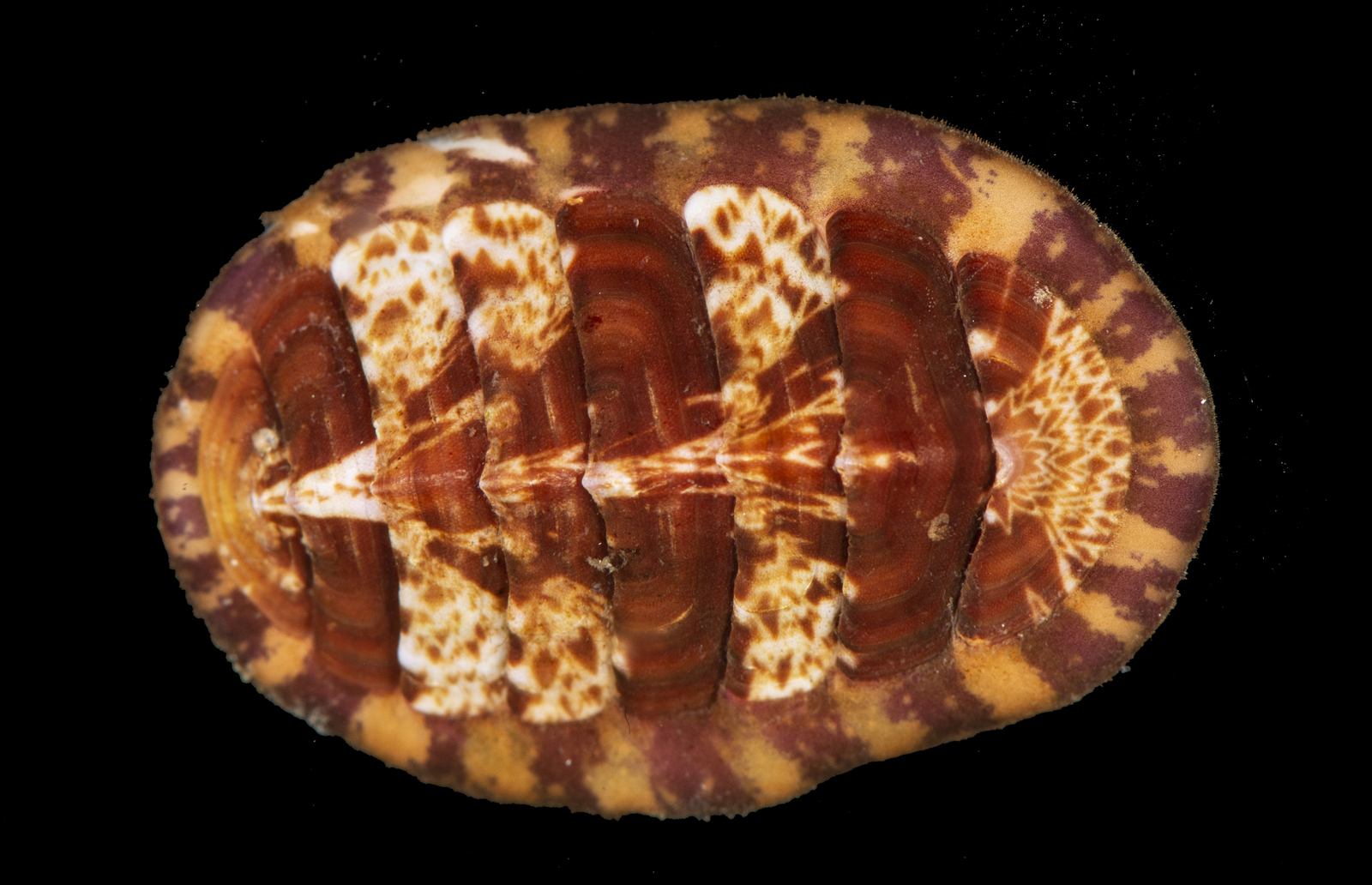Some molluscs, like snails, clams, mussels and octopuses are familiar to most people, but others are more unknown. Among these are the flattened, shell-bearing chitons (skallus/leddsnegler in Norwegian). They are commonly found clinging to rocks in the intertidal zone, and can be found all along the coastline. Many species can be colourful, with stripes, dots and zigzag lines ornamenting the shell plates.
The scientific name, Polyplacophora, translates to “bearer of many plates”, and refers to the eight hard shell plates covering the animal. The shell provides protection from predators, and the organization of the shell into eight separate plates also provides flexibility— if disturbed, some species can roll up into a ball like a hedgehog. Surrounding the shell is a tough girdle, which in many species is covered in scales or spines, which also serve to deter any predators.
On the underside, the chiton has a muscular foot that is used for movement and for attaching firmly to the rocks that they live on. They rasp food, like encrusting algae and animals, from the substrate with their radula, a tongue-like structure with several rows of tiny teeth. The teeth are often reinforced with minerals to make them extra durable for scraping on rocks.

The underside of the chiton Tonicella marmorea. The muscular foot can be seen the centre. The gills are seen around the foot to the right. The head with the mouth can be seen on the left side. Photo N. Mikkelsen
Chitons are found in habitats from the intertidal down to depths of several thousand meters, usually on stones or rocky surface. Some species have adapted to other habitats. One of the species we find in Norway is even specialized to live on large sponges in the deep-sea. This chiton grazes on the sponge, and in the process gradually digs out a depression in the sponge perfectly fitted for the chiton to sit in.
Chitons are a very old animal group, with fossil dating back 500 millions years. In fact, their body plan even still bears resemblances to the animals that were among the ancestors of the variety of molluscs in existence today. The chiton’s way of life is apparently an evolutionary successful recipe!
The next time you walk along the seashore, take a close look at a rock and you might find some colourful chitons!
-Nina


